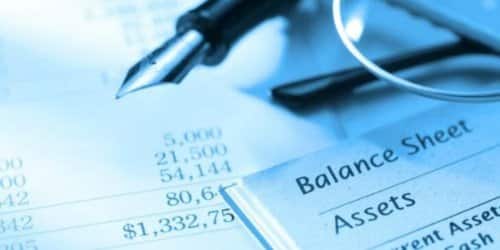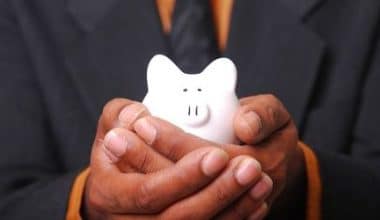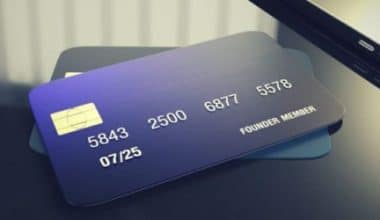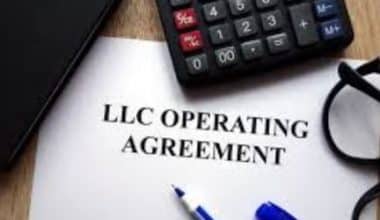The balance sheet of a business, often known as a “statement of financial position,” shows the company’s assets or stocks, liabilities, and owner’s equity (net worth). The balance sheet, together with the income and cash flow statements, is the foundation of every company’s financial statements. If you are a shareholder of a company or a potential investor, it is important to understand how the balance sheet is structured, how to read one for your stocks and the basics of how to analyze it. In this guide, we will cover a simplified method of how to read either a balance sheet or income statement, even dummies can understand.
What is a Balance Sheet?
A balance sheet is a financial record that communicates the actual value of a firm or organization—its “book value.” This is accomplished by listing and calculating all of a company’s assets, liabilities, and owner’s equity as of a specific date, often known as the “reporting date.”
A balance sheet is often generated and distributed quarterly or monthly, depending on the frequency of reporting required by law or corporate policy.
How Does a Balance Sheet Work?
Although the balance sheet is divided into three components (assets, stocks, liabilities, and equity), all three must balance. “How can three things balance?” you’re undoubtedly wondering. Is this some kind of circus juggling act?” Fortunately, no juggling is required. However, there is a mathematical equation that must be balanced.
This is known as the accounting equation, and it is as follows:
Assets = Liabilities + Shareholders’ Equity
This means that your company’s total liabilities plus total shareholder equity must equal its total assets.
Why Is a Balance Sheet Important?
A balance sheet is a snapshot of a company at a specific point in time. It is a snapshot of a company’s financial status, as defined by assets, liabilities, and equity. Balance sheets serve two distinct functions depending on who is reviewing them.
A balance sheet is intended to provide insight into whether a firm is successful or failing when it is reviewed internally by a business leader, important stakeholder, or employee. Based on this data, an internal audience can adjust policies and approaches, doubling down on successes, correcting errors, and pivoting toward new opportunities.
A balance sheet is intended to provide insight into what resources are available to a firm and how they were financed when it is reviewed externally by someone interested in the company. Potential investors can determine whether or not to invest in a firm based on this information. Similarly, the information on a balance sheet can be used to compute crucial measures like as liquidity, profitability, and debt-to-equity ratio.
External auditors, on the other hand, may utilize a balance sheet to confirm that a company is following any reporting regulations that apply to it.
Remember that a balance sheet presents information as of a given date. A balance sheet is, by definition, based on prior data. While investors and stakeholders can use a balance sheet to forecast future performance, prior results are no guarantee of future results.
Steps to Read the Balance Sheet of a Company
To read a balance sheet of a company, you must first grasp its many components and what the figures indicate about the health of your company. A balance sheet is divided into three sections:
- Assets – Current Assets / Long-term assets
- Liabilities – Current Liabilities/Long-term liabilities
- Stockholders’ (or owner’s) equity – Common stock / Retained earnings
Remember the most important Balance Sheet equation – Assets = Liabilities + Shareholders’ Equity
It has three primary “heads,” which are listed below, along with a brief summary of what each head covers:
#1. How to Read the Balance Sheet Assets or Stocks of a Company
When it comes to how to read the balance sheet of your company stocks, it covers everything the corporation has or everything that meets four criteria: future, probable, economic, and the benefit that will fall under this heading. It is further separated into two categories: current assets and long-term assets.
Current Assets
Here are a few examples of goods that fall under this category:
- Cash: It displays the company’s cash balance, whether it is physical cash or a bank balance.
- Marketable Securities: Marketable Securities are short-term investments made by the company. They can be in the form of bonds or capital stock in other companies. Because they have high liquidity and can be easily converted into cash, these assets can come in useful when we don’t have enough funds.
- Accounts Receivable: Accounts Receivable are credit sales made by the company. It is an asset because the corporation sold it but has yet to receive the proceeds.
- Inventory: Inventory is the company’s stock.
- Prepaid expenses and accumulated income: Before obtaining any product, the company may need to incur some prepaid expenses. For example, money is spent on advertisements. However, the benefits will be realized over time. We can also have accumulated income, which is income earned but not received. As a result, regardless of whether such income is received or not, we can record it in the current fiscal year. So it will be similar to accounts receivable, and we will be sure to receive our money in the future.
Long Term Assets
There are a few items that follow under this element, which include:
Plant & Equipment: This section displays all of the machinery that the company uses to manufacture its products. We also charge it depreciation to lower its worth over time. Depreciation allows us to demonstrate the full value of these assets in our firm.
Then we can acquire other assets like land, furniture, vehicles, computers, and so on.
#2. How to Read Balance Sheet Liabilities of a Company
It comprises the full sum owed to outsiders by the company. Most organizations employ leverage to boost their profit margins. Leverage is the use of debt to finance our firm, lowering the company’s reliance on the owner’s capital to support day-to-day operations. It is further separated into current and long-term liabilities.
Current Liabilities
It contains the following items:
- Accounts Payable: Accounts Payable is the total amount owed by the company to its suppliers for the supply of raw materials or goods. Most sectors operate on trade credit, which allows the buyer time to arrange the finances before making the payment. It boosts the business’s sales by allowing them to sell to clients who do not have the money to pay upfront but will do so soon.
- Unearned Revenue: The inverse of Accrued Income is Unearned Revenue. We have received payment from our consumers in this situation, but we have yet to deliver the items. As a result, it becomes a short-term liability until the goods are delivered.
- Current portion of long-term debt: CPLTD includes all the debt payments accruing within a year.
Long Term Liabilities
Long-term debt: Long-term debt involves funds raised for a longer period of time and is thus an important component of our capital structure.
#3. How to Read Balance Sheet Equity of a Company
It comprises the full amount supplied by the owner to the firm. It also includes two major items:
Paid-up Capital: Paid-up Capital is the business’s core capital. In large corporations, it can be further divided into ordinary stock and preferred shares. We tend to have preference over common stock in terms of dividend distribution, but they have no voting rights, whereas common equity is the foundation of the company’s capital structure.
Retained Earnings: It is a snapshot of the total amount earned by the owners and reinvested in the firm rather than accepting the dividend.
The items listed above are not exhaustive, and more products may fall under one of these three categories. The major goal is to emphasize the key elements that may fall under them.
How to Read the Income Statement of a Company
Your income statement shows how much money your company spent and how much it received within a fiscal reporting period. This allows you to compute your net profit—the bottom line.
The bottom line is so named because net profit sits at the bottom of your income statement. As you work your way down the income statement, more and more expenses are applied to your revenue, resulting in a more specific income line item.
What Can You Tell From Looking at a Company’s Balance Sheet?
Balance sheets provide an overview of the company’s assets and liabilities, as well as how they connect to one another. The balance sheet can assist answer concerns such as whether the company has a positive net worth if it has adequate cash and short-term assets to pay its obligations, and whether it is heavily indebted in comparison to its rivals. Fundamental analysis utilizing financial ratios is another useful set of tools that draws information straight from the balance sheet.
What’s Included in a Balance Sheet?
The balance sheet contains information about a company’s assets and liabilities, as well as the resulting shareholders’ equity. These could be short-term assets like cash and accounts receivable, inventories, or long-term assets like property, plant, and equipment (PP&E). Similarly, its liabilities may comprise both short-term commitments like accounts payable to vendors and long-term liabilities like bank loans or corporate bonds issued by the company.
How to Analyze the Balance Sheet?
Aside from that, there are two basic balance sheet forms that we can utilize to present this financial statement, which are listed below:
#1. Vertical Analysis Balance Sheet
In this sort of vertical analysis, we examine all balance-sheet items as a percentage of total assets. It provides a more accurate graphical picture of our whole asset base.
#2. Horizontal Analysis Balance Sheet
In this horizontal analysis, we look at all of the balance sheet components in absolute numbers but over time, therefore it is also known as trend analysis. The goal is to assess how the company has progressed over time.
Then there’s a common-size balance sheet, which is more detailed and shows items in absolute and percentage terms over a longer time span.
What Are the Uses of a Balance Sheet?
A balance sheet provides a snapshot of your company’s financial situation at any given time. A balance sheet, along with an income statement and a cash flow statement, can assist business owners in evaluating their company’s financial status.
What Are the Types of Balance Sheets?
Balance sheets are classified into three types:
- Comparative balance sheets.
- Vertical balance sheets.
- Horizontal balance sheets.
What Are the Main Things Found on a Balance Sheet?
The balance sheet is divided into three sections: assets, liabilities, and equity.
Does a Balance Sheet Always Balance?
Yes, because the entry for shareholders’ equity is always the residual or difference between a company’s total assets and total liabilities, the balance sheet will always balance. When a company’s assets exceed its obligations, the result is positive net equity. If liabilities exceed total net assets, shareholders’ equity becomes negative.
Conclusion
A company’s balance sheet contains some of the most critical information for a business leader, regulator, or potential investor to grasp. Without this knowledge, it can be difficult to determine whether a firm is failing or thriving, underscoring the importance of understanding how to read and understand a balance sheet for anybody interested in business.
Related Articles
- WHAT ARE ASSETS AND LIABILITIES: Definition, Differences and Examples
- Accounting balance sheet explained: samples, templates, examples and definition
- INCOME STATEMENT: Formats, Examples, and How To Prepare One
- FINANCIAL STATEMENT: What Is It, Examples, Types & Analysis
- INCOME STATEMENT ACCOUNTS: Definition, Examples, How to Read & Use It






